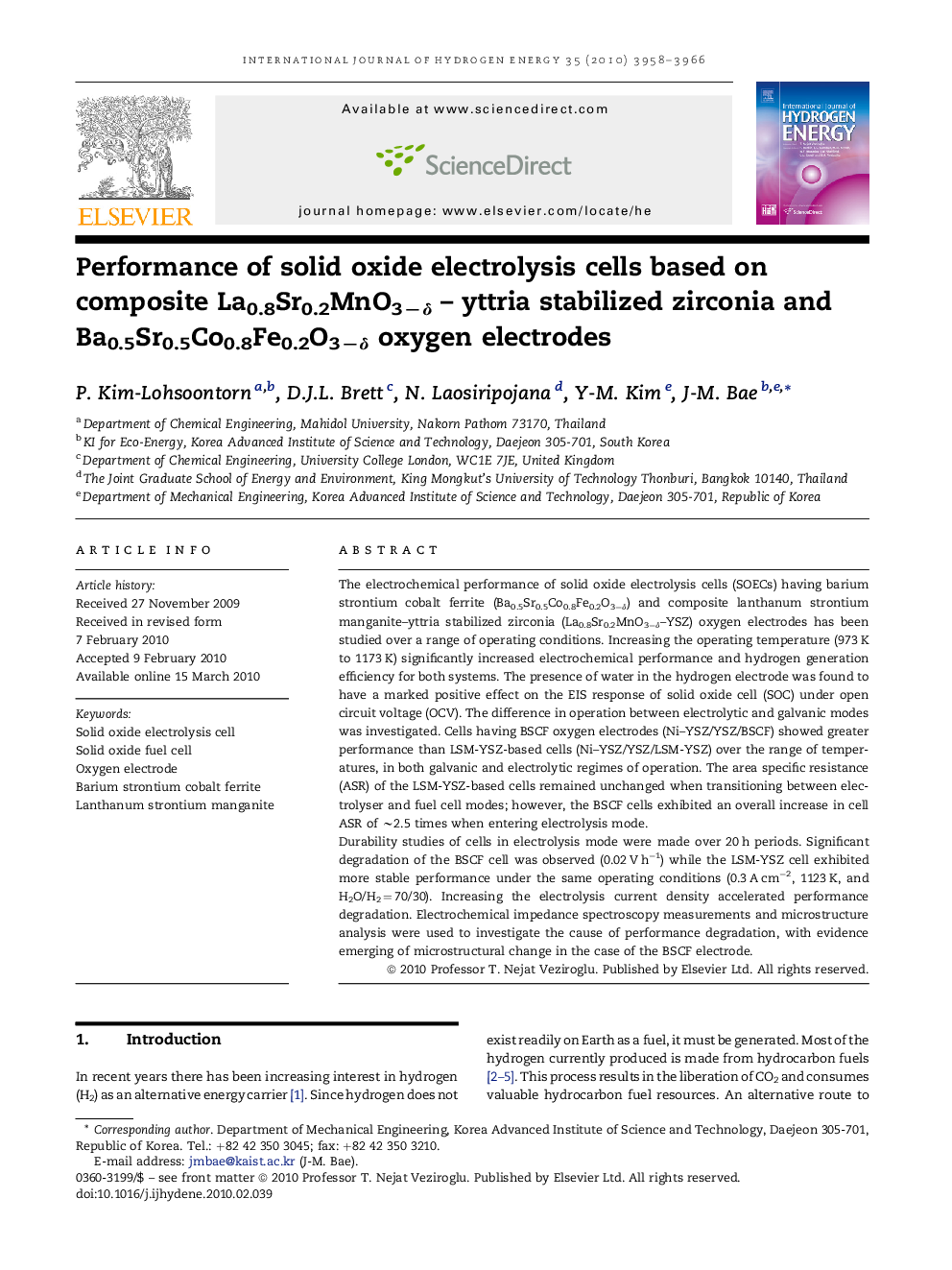| Article ID | Journal | Published Year | Pages | File Type |
|---|---|---|---|---|
| 1273091 | International Journal of Hydrogen Energy | 2010 | 9 Pages |
The electrochemical performance of solid oxide electrolysis cells (SOECs) having barium strontium cobalt ferrite (Ba0.5Sr0.5Co0.8Fe0.2O3−δ) and composite lanthanum strontium manganite–yttria stabilized zirconia (La0.8Sr0.2MnO3−δ–YSZ) oxygen electrodes has been studied over a range of operating conditions. Increasing the operating temperature (973 K to 1173 K) significantly increased electrochemical performance and hydrogen generation efficiency for both systems. The presence of water in the hydrogen electrode was found to have a marked positive effect on the EIS response of solid oxide cell (SOC) under open circuit voltage (OCV). The difference in operation between electrolytic and galvanic modes was investigated. Cells having BSCF oxygen electrodes (Ni–YSZ/YSZ/BSCF) showed greater performance than LSM-YSZ-based cells (Ni–YSZ/YSZ/LSM-YSZ) over the range of temperatures, in both galvanic and electrolytic regimes of operation. The area specific resistance (ASR) of the LSM-YSZ-based cells remained unchanged when transitioning between electrolyser and fuel cell modes; however, the BSCF cells exhibited an overall increase in cell ASR of ∼2.5 times when entering electrolysis mode.Durability studies of cells in electrolysis mode were made over 20 h periods. Significant degradation of the BSCF cell was observed (0.02 V h−1) while the LSM-YSZ cell exhibited more stable performance under the same operating conditions (0.3 A cm−2, 1123 K, and H2O/H2 = 70/30). Increasing the electrolysis current density accelerated performance degradation. Electrochemical impedance spectroscopy measurements and microstructure analysis were used to investigate the cause of performance degradation, with evidence emerging of microstructural change in the case of the BSCF electrode.
